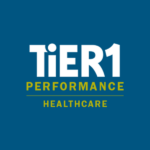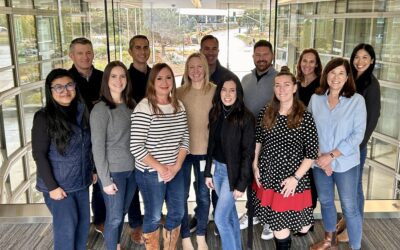If you ask a healthcare professional why they chose their profession, the vast majority would mention a desire to help, and to care for people. Many will mention a personal experience that led them to that choice. These people show up every day to do the noble work of caring for others, because they genuinely do care. With rare exceptions, they would never dream of doing something that increases the potential to cause harm to their patients.
Healthcare settings are complex, dynamic, and fluid systems—a combination that creates an environment with an inherent opportunity for failure. When things go wrong in healthcare, individuals suffer on both sides, and at times the institution itself suffers. After examining a failure in a process, often the outcome is a new process, procedure, expectation, or policy. This doesn’t just happen at the facility level, payors and accrediting organizations (AOs) take note as well.
Oversight agencies are also well intended. The Centers for Medicare and Medicaid Services (CMS) department of Quality, Safety & Oversight’s mission is to assure “basic levels of quality and safety for all patients.” Likewise, The Joint Commission (TJC) seeks to improve healthcare through “evaluating organizations and inspiring them to excel in providing safe and effective care of the highest quality.” Other accrediting organizations provide similar patient and healthcare improvement centric mission statements. It is not what these organizations are trying to do that is not working, but how the work is accomplished.
The Role Surveys Play in Healthcare
Participation in Medicare means regular, unannounced, onsite surveys to demonstrate compliance with the Conditions of Participation (CoP). These surveys can be grueling, and the stakes of an adverse survey can be significant for a healthcare facility and those accountable to its success. Although the goal between healthcare professionals, healthcare organizations, CMS, and AOs like TJC is the same, having an oversight agency come onsite every three years with the ability to recommend a termination track for the facility does not lend itself well to encouraging collaboration, openness, or shared learning. Instead, staff are trained on how to interact and respond to surveyors while a team works in the background to stay two steps ahead of the survey team.
Many healthcare organizations have leaned into mock surveys (also known as “a mock”) to test their survey management process and identify health and safety risk points. Mocks are generally presented as a learning experience for staff. However, as they are also designed to test an organization’s survey management processes, the self-preservation tactics intended for regulatory surveys often impact how candidly staff interact with the team. Often when we are in discussions with an organization about conducting a mock survey, we hear statements like, “we need to make sure we are ready for survey,” or “we would rather have you guys find it than the surveyors.” Organizations often expect mock survey teams to deliver a “no stone left unturned” approach to ensure there are no surprises during the regulatory survey. After a mock, organizations are left with a lengthy report of opportunities, and healthcare leaders respond through implementing plans of correction in anticipation of their regulatory survey. If the mock survey process were working as intended, we should see improved outcomes during CMS and AO surveys.
Why Surveys Don’t Work
A handful of healthcare organizations lose their accreditation status each year; even more receive deficiencies reaching the conditional level deficiency (CLD) or immediate jeopardy (IJ) level, findings which by CMS definition are “of such character that substantially limits the provider’s or supplier’s capacity to furnish adequate care or which adversely affects the health or safety of patients” or are “likely to cause serious injury, harm, impairment, or death to a patient(s).” As an example, between fiscal years 2016 and 2018, nearly 50% of hospitals who experienced a CMS validation survey received a CLD. The fact that a healthcare organization can conduct a mock survey, undergo an AO survey, and still receive CLD during a CMS validation survey tells us this process is flawed.
We were curious about trends of organizations where we provided mock surveys over the past few years and started to examine the data. Healthcare organizations tend to fall short on health and safety standards and are consistent with CMS and TJC common findings. According to the last two CMS Annual Reports to Congress, the top four CoPs cited at the conditional level on hospital validation surveys have been the physical environment, followed by infection prevention and control and antibiotic stewardship programs (IPC), governing body, and quality assurance and performance improvement program (QAPI). Additionally, patient’s rights and food & dietic services simply swapped places the same two years with FY2018 having pharmacy tie with patient’s rights (see Table 1).
The Joint Commission (TJC) also releases yearly data, including an annual report detailing the top high-risk findings. Between 2019 and 2020, the top six standards cited for hospitals have shuffled positions but remained the same top six (see Table 1). With the exception of MM.06.01.01 EP3, the top standards cited by TJC can crosswalk back to the same CoPs commonly cited by CMS on validation surveys. Similar data is available from both CMS and TJC for other types of healthcare organizations.

Table 1
One might look at this and rationalize, but this data does not represent a full survey cycle from either entity. A quick deep dive into CMS hospital complaint surveys will demonstrate that for fiscal years 2015, 2016, 2017, and 2018, the top five CoPs are unchanged with only one slip of rearrangement of order during that time. Not only are they unchanged, but four of the five top complaint survey CLDs are also within the top six validation survey CLDs (see Table 2). Additionally, as far back as fiscal year 2014, physical environment, IPC, and governing body have been the top three CoPs cited on validation survey with only one deviation in order of occurrence.

Table 2
If at the soul of healthcare professionals and healthcare organizations lies a desire to safely care for their patients, and we continue to see organizations conduct mock surveys, undergo regulatory surveys, action plan their results, and yet experience a relative stagnation in survey performance—we must ask if surveys can effectively ensure regulatory compliance or protect the welfare of patients. Our answer is no, the process as it is designed and executed is missing the mark on patient safety. Through conversations with healthcare leaders, we know we are not alone in our belief. Healthcare leaders have shared stories of glowing survey reports, going on to explain how the report does not accurately represent opportunities within their facility as “they (the survey team) did not even look.”
Where Do We Go from Here?
We believe there is a set of interrelated factors impacting healthcare organizations’ performance that are not fully investigated through a traditional survey and response approach. Several aspects could lead to this limitation including, the power dynamic between oversight agencies and healthcare systems, the sheer volume of regulations to evaluate, the volume of deficiencies relative to the time to respond, and exhaustion from repeatedly trying to solve the same problem.
Without identifying underlying systems, process, cultural and behavioral factors that impact risk, mock and regulatory surveys and their action plans can become a cyclical exercise in oversimplifying solutions. A typical “blame, shame, and retrain” response focuses on the individual without studying the structural factors that underlie said individual’s performance. Often front-line staff have no control over these factors, and those who do have little visibility into how they impact front-line performance. Until those factors are uncovered and discussed, the result can be demotivating and frustrating, and can ultimately impact patient outcomes.
Our goal in this work is to move away from a sole focus on “what you have to fix” and move toward “how might we design a sustainable culture of high performance.” We know that front-line staff can, and often do, speak specifically to the factors that impact their work; we also know that open, transparent conversation between leaders at all levels can reveal potential gaps and opportunities. This is complex systems work; our role is to help uncover those gaps, whether process, cultural, or behavioral, and create space for these conversations to occur (see Sidebar Case Example).

Sidebar Case Example
We may not be able to control how oversight agencies survey, but we can change how we approach regulatory compliance and patient safety. We firmly believe there is a way forward, a way that plays at the intersection of regulation and practice and empowers teams to own the results of their work and ultimately do what they signed up for in the first place: to care for people. Check out our follow-up piece to dive deeper into how this work gets done.
Interested in exploring alternative approaches to mock surveys? We’d love to discuss how we can help your healthcare organization ensure regulatory compliance and improve patient safety. Fill out the form below or give us a shout at hello@tier1performance.com.
TiER1 Healthcare Consultants Mark VanderKlipp and Tasha Deitschman collaborated on this article.




